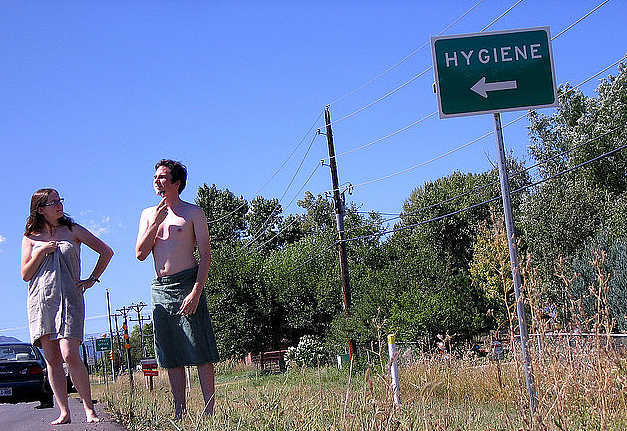The journalistic perils and promise of the next big theory

A recent study found that inner-city kids suffered from higher rates of food allergies than their peers. It’s an interesting but incremental finding that builds on earlier research that found that inner-city kids have above-average rates of asthma and environmental allergies.
But it was a detail buried near the bottom of the study’s news release that caught my interest:
Children living in houses with higher levels of endotoxin, a molecule released by certain types of bacteria, were less likely to have a food allergy. This latter finding, the investigators say, is consistent with the so-called hygiene hypothesis, which suggests that early-life exposure to certain microbes can play a protective role against asthma and allergies.
So did that bacterial exposure over time somehow inoculate some of these kids’ immune systems against food allergies? Fascinating!
If you do much health reporting, you’ll probably have noticed that mention of the “hygiene hypothesis” has become increasingly common in recent years, as talk of the “microbiome” and “beneficial bacteria” rapidly gains media share. Call it the “microbial turn” in thinking about the forces that promote or erode good health. The hygiene hypothesis itself has been bandied about as a possible explanation for everything from allergies to asthma to autoimmune disorders.
But what is the hygiene hypothesis? And how do we report on such working “hypotheses” without overleaping the evidence?
The hygiene hypothesis is based on the idea that in Western first-world settings at least, we’ve effectively cleaned our way to lousier health. Over the course of the 20th Century, we have increasingly sanitized our homes and workplaces, scrubbing away dirt, processing food, and sterilizing germs. By doing so, the hypothesis holds, we’ve effectively robbed kids’ immune systems of crucial interactions that could strengthen immunity — as well as prevent them from overreacting to seemingly harmless triggers, like dust mites or peanuts. Think of it, if you like, as keeping your kid out of school. If she never gets a chance to polish her social intelligence by mingling and tussling in the wilderness of other kids, she won’t hone her ability to separate friend from foe and real threat from bluff and so will be ill-prepared to manage the complex social signals of wider society as she grows.
While the hygiene hypothesis was first formulated to explain hay fever and similar allergies, some scientists have since extended the idea to account for autoimmune disorders such as type 1 diabetes and multiple sclerosis. (We’ll leave the controversy over potential links to autism aside for now.)
But in most of these cases, the links between the hygiene hypothesis and such conditions are still being sorted out by investigators. In her 2012 assessment of a book on the topic by journalist Moises Velasquez-Manoff, reviewer Dr. Abigail Zuger warns against falling in love with an idea – such as the hygiene hypothesis – since “seldom will the inanimate beloved live up to your besotted expectations.”
Here’s Dr. Zuger bringing a cold shower to the hygiene hypothesis party:
Clearly, if true, the hygiene hypothesis is the single greatest medical story of our time, undercutting a century of putative progress. Is it true? Probably some of it is. But Mr. Velasquez-Manoff’s ambitious compendium of data and supposition — a great dense fruitcake of a book whose 680 endnotes, the author notes apologetically, refer to only a minority of the 10,000 studies he consulted — spins it all out in the most positive possible way with an energy, eloquence and desire to believe that is both breathtaking and a little scary.
The point here isn’t the hypothesis is wrong – it’s that in our journalistic rush to explain and believe, we may be putting our enthusiasm for the scoop before the still-amassing data. “The genetic and immunologic details behind these assertions are immensely complex, but enough experimental confirmation exists to keep scientists at prestigious institutions around the world deeply engaged in sorting it out,” Zuger writes.
So how might one report smartly on an emerging new theory without being carried away by the updraft of its explanatory power? Veteran reporter Patti Neighmond, NPR’s health policy correspondent, deftly navigated this territory in a 2012 story on rising allergy rates among U.S. children. To start, she frames the search for an explanation as an ongoing scientific process. “Researchers are trying to understand why,” Neighmond says in her story. “The leading theory: the hygiene hypothesis.”
Language matters, and “leading theory” is on point in a way that “best explanation” or “likely answer” is not.
After explaining how kids growing up on farms may benefit from exposure to a rich microbial stew, Neighmond points out that researchers are still teasing out the connections at play. Is it the microbial magic of raw milk? Cooties from cozy cows? Airborne barn dust? All of these? We don’t know yet. And, crucially, she gives space to other theories that could, individually or collectively, also account for the allergy boom:
There are other theories about why allergies are on the rise. Taking antibiotics early in life may be a factor. Tightly constructed homes with little ventilation may foster allergies. And today people stay inside for longer periods of time, not exposing themselves to the great outdoors.
It’s only natural to get really excited by big new scientific ideas that promise to explain wider and wider swaths of the natural world or our health. As journalists, we’re supposed to be skeptical by nature. But as non-scientists, we lack some of the sophisticated intellectual prophylactics that help researchers find holes, weaknesses and limits in the data. That’s why we rely on them as sources, while making room for the unpersuaded and their alternative theories in our stories.
Photo by Bob McDevitt via Flickr.

